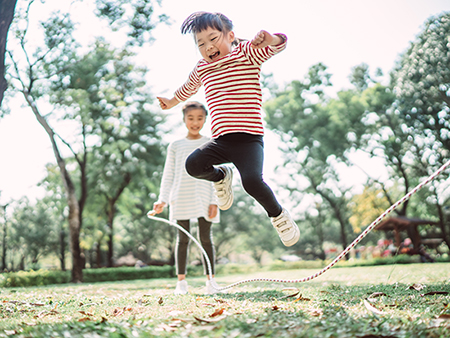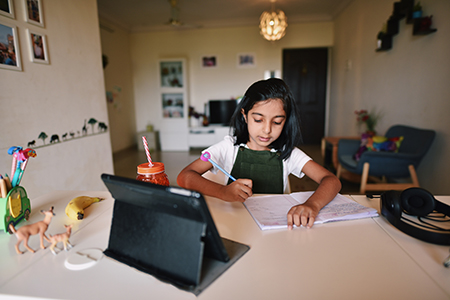Media contact: Brianna Hoge
 As novel coronavirus cases surged, many schools switched to virtual learning. While learning online helps lessons continue during the pandemic, students could face severe inactivity while learning from home, and a desk-bound learning system is leading to complex emotions such as anxiety, fear, loneliness and grief, experts say.
As novel coronavirus cases surged, many schools switched to virtual learning. While learning online helps lessons continue during the pandemic, students could face severe inactivity while learning from home, and a desk-bound learning system is leading to complex emotions such as anxiety, fear, loneliness and grief, experts say.
Sandra Sims, associate professor in the University of Alabama at Birmingham School of Education, suggests that an activity as simple as walking can help students.
“Walking around the house, up and down the stairs, marching in place is an easy activity and does not conflict with COVID-19 guidance for staying safe,” Sims said.
Physical activity and exercise can combat increasing disparities in children’s focus on learning and accelerate their academic progression.
Throughout the day, students should have several breaks to stretch their legs and increase their heart rate. To improve children’s academic performance, the Centers for Disease Control Physical Activity Guidelines states that children and adolescents ages 6 through 17 years should get at least 60 minutes of moderate- to vigorous-intensity physical activity each day.
Activity breaks after 50 minutes of continuous sitting are recommended, and physical activity breaks of five to 20 minutes can improve attention span, classroom behavior and achievement test scores, according to the CDC.
Play does not have to be structured and can be on land or in water — whatever the child enjoys. Allowing children the freedom to choose between physical activities will instigate a sense of enjoyment, fostering a healthy, active lifestyle.
“Children do what they see, so participating in physical activities as a whole family is helpful for children,” Sims said.
In addition to physical activities, parents can use school breaks to introduce balance activities to students.
Balance is part of a child’s successful progression in fundamental development. Higher levels of balance can help reduce injuries in children, as well as increase their ability to participate in a variety of sports and activities.
“Balance impacts many areas of motor skill development,” said Claire Mowling, Ed.D., assistant professor of kinesiology in the UAB School of Education. “Understanding center of gravity, line of gravity and base of support helps children make adjustments in the moment to maintain balance, thereby enhancing performance of motor skills.”
 “Young children, especially kindergarteners and first-graders, can practice balance by learning various bases of support through statue poses,” Mowling said. “They can progress through these movements by learning to achieve balance as their base is wider, more narrow, curled or twisted into different poses.”
“Young children, especially kindergarteners and first-graders, can practice balance by learning various bases of support through statue poses,” Mowling said. “They can progress through these movements by learning to achieve balance as their base is wider, more narrow, curled or twisted into different poses.”
As children move into the upper elementary grades, educators can look at ways to balance on new bases, like a balance beam, or moving through various obstacle courses to teach balance while moving. Extensions on bases and learning to dismount using a balanced landing position should be achieved at this age level.
Prioritizing physical activity in children during virtual learning should be a commitment from every school that is creating virtual platforms, Mowling says, and families need to encourage their children to take activity breaks. Everybody wins with this addition to virtual learning.
